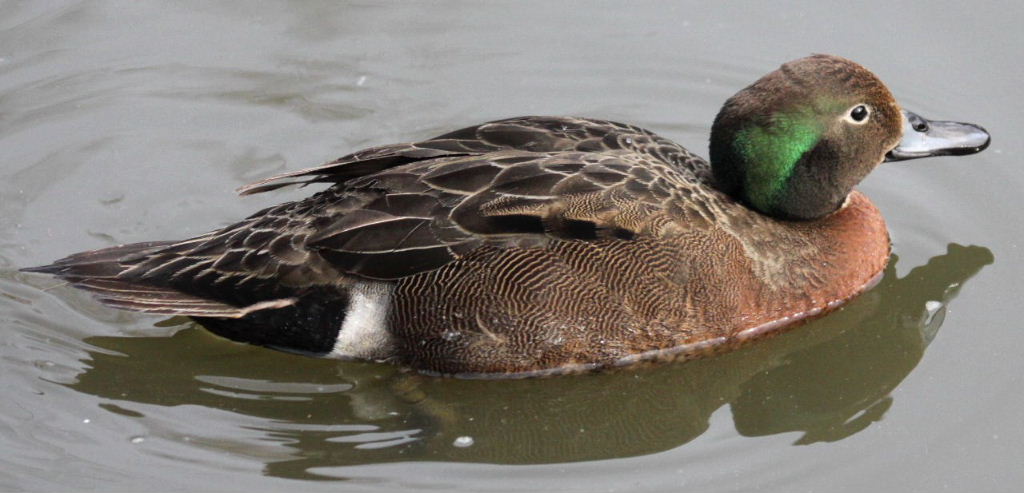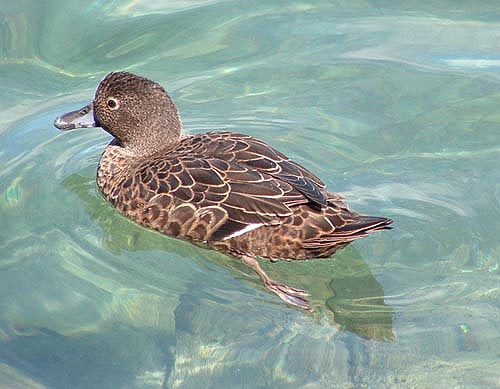
Anas aucklandica
SUBFAMILY
Anatinae
TAXONOMY
Nesonetta aucklandica G. R. Gray, 1844, Auckland Islands; the
three subspecies may deserve species status.
OTHER COMMON NAMES
English: Brown duck, New Zealand teal, Pateke; French: Sarcelle
brune; German: Auklandente; Spanish: Cerceta Maorн.
PHYSICAL CHARACTERISTICS
14.2–18.9 in (36–48 cm); 0.8–1.5 lb (375–700 g); A. a. aucklandica
and A. a. nesiotis are flightless.
DISTRIBUTION
New Zealand and nearby islands. A. a. aucklandica: Auckland
Islands. A. a. chlorotis: patchily distributed on North Island
and southwestern South Island. A. a. nesiotis: Dent Island to
the northwest of Campbell Island; 12 individuals have been released
on Codfish Island in 1999.
HABITAT
Sheltered coastlines with kelp beds, inland wetlands with some
tree cover.
BEHAVIOR
Male participates in brood rearing. Very territorial during the
early breeding season. Males patrol territories using aggressive
displays and chest-to-chest fighting. Often nocturnal.
FEEDING ECOLOGY AND DIET
Feeds by probing, dabbling, upending, and diving. Searches for
food in kelp beds, washed-up algae on beaches, marshes, ponds,
and slow flowing waters. Diet consists invertebrates, roots, and
tips of shoots.
REPRODUCTIVE BIOLOGY
Seasonally monogamous. Nest is well hidden in thick vegetation.
A. a. chlorotis breeds mostly from Jun. to Oct. and
A. a. aucklandica begins breeding season in Dec.–Jan.
Probably lays 4–8 eggs; incubation c. 29–30 days; fledging c.
50–55 days.
CONSERVATION STATUS
A. a. aucklandica considered Vulnerable and A. a. chlorotis Endangered.
Only about 25 pairs remain of A. a. nesotis which is
considered Critically Endangered. The species appears to be
declining due to introduced predators, habitat destruction, and
hunting. Listed on Appendix I of CITES.
SIGNIFICANCE TO HUMANS
Sometimes hunted.
Other popular Animals
Photo Gallery of - Brown teal




 Animalia Life
Animalia Life